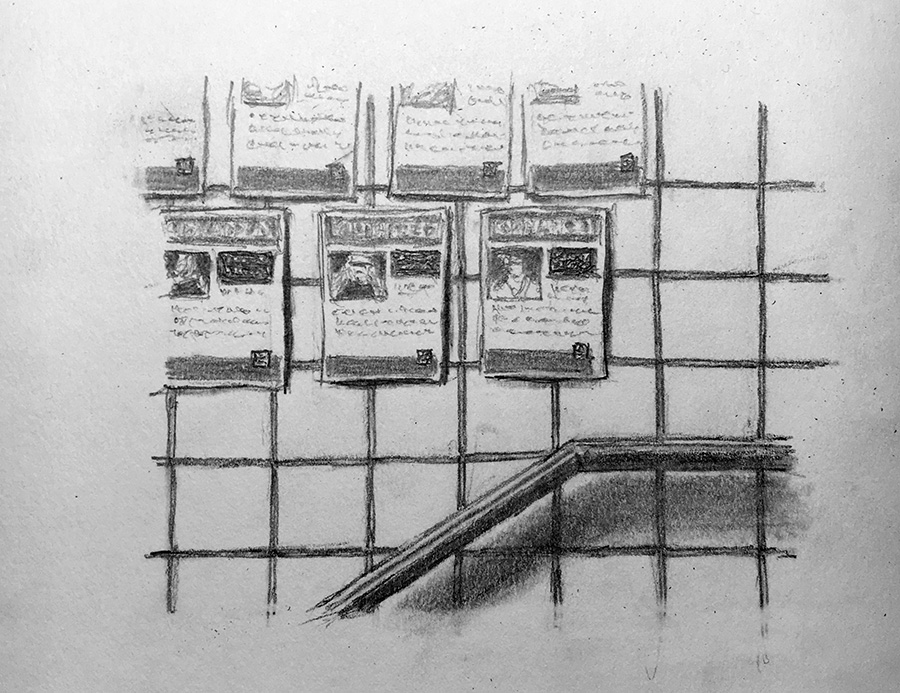
I’m leaving the station at 77th Street on the 6 line when I notice a flurry of activity at the exit: a group of volunteers for a Jewish organization is pasting up flyers of the victims of kidnapping during the recent Hamas attacks. The flyers feature large photographs along with the names, ages and nationality of the victims. The word ‘Kidnapped’ appears bold font on a red banner at the top. The volunteers have already covered many of the tiled walls that line the stair leading to the street, and the effect is undeniably personal and disturbing. A woman walking just ahead of me pauses as she ascends, her gaze sweeping across the wall of flyers; then she turns, looks back at the volunteers and gives a solemn nod of approval. This gesture, I realize – a seemingly simple expression of sympathy or solidarity – takes on an inevitable political significance in this moment of crisis in the Middle East, where terms like ‘victim’, ‘aggressor’, and ‘innocence’ are highly contested. The posting of flyers in this guerrilla fashion is clearly meant as a provocation, intended to stir up moral outrage and solidify support for Israel. And, it stands to reason, flyers depicting Palestinian civilians killed by Israeli airstrikes wouldn’t meet with the same response in a neighborhood like the Upper East Side. At the same time, whatever one’s politics, it’s impossible not to be affected by the scale of the tragedy presented by these images. I can’t help but be reminded of the ‘missing’ flyers that appeared everywhere after 9/11, which were at first desperate attempts to locate a lost relative or loved one, and were widely embraced as symbols of grief, rage and loss – but later became instrumentalized as propaganda to justify the brutal U.S. military response.
Leave a comment